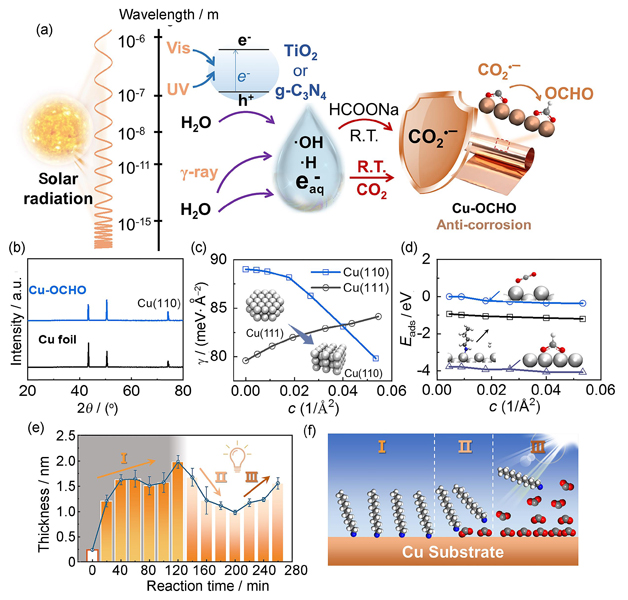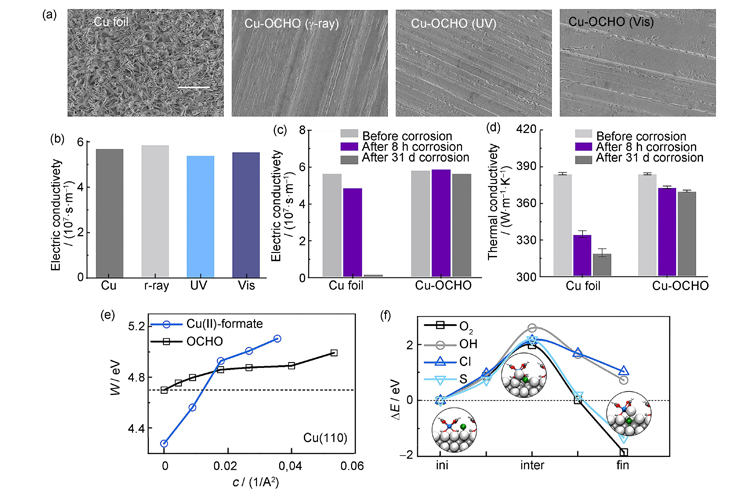Boneng HUANG, Zhiwen JIANG, Jun MA. Highly efficient oxidation resistance of copper via radiation/light-powered bidentate binding of carbon dioxide anion radicals[J]. Journal of Radiation Research and Radiation Processing, 2023, 41(1): 011001
Search by keywords or author
Journals >Journal of Radiation Research and Radiation Processing >Volume 41 >Issue 1 >Page 011001 > Article
- Journal of Radiation Research and Radiation Processing
- Vol. 41, Issue 1, 011001 (2023)

Fig. 1. (a) Schematic illustration of photo-induced generation of CO2•- and surface coordination; (b) XRD patterns of bare and treated Cu foils; (c) calculated surface energies γ of DA-terminated Cu(111) and Cu(110) as a function of the DA concentration; (d) adsorption energies Eads of CO2, DA, and OCHO groups as a function of their concentrations on Cu(110). Time-resolved AFM height curve (e), and schematic illustration (f) of Cu surfaces during no-light and visible light irradiation experiments

Fig. 2. (a) SEM images of Cu foil and Cu-OCHO after immersion in 0.1 mol/L NaOH solution for 24 h; (b) electric conductivity of Cu foil and Cu-OCHO; (c) electric and (d) thermal conductivities of Cu foil and Cu-OCHO before and after corrosion in 0.1 mol/L NaOH at room temperature; (e) work functions W of bare Cu(110) and carboxylated Cu(110) as a function of the OCHO concentration; (f) calculated minimum energy pathways for several corrosive species (O2, OH, Cl, and S) to diffuse through the carboxylation layer of Cu(110)
Fig. 3. Optical images of (a) natural sunlight irradiation device; (b) treated Cu foil, and (c) treated Cu heat sink immersed in 0.1 mol/L NaOH solution for 16 h; (d) optical image and schematic illustration of continuous fabrication by electron beam; (e) optical image of treated Cu foil

Set citation alerts for the article
Please enter your email address



